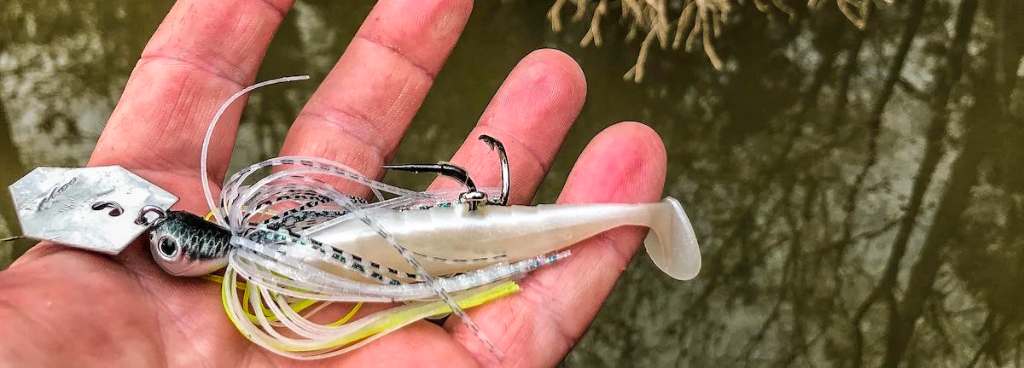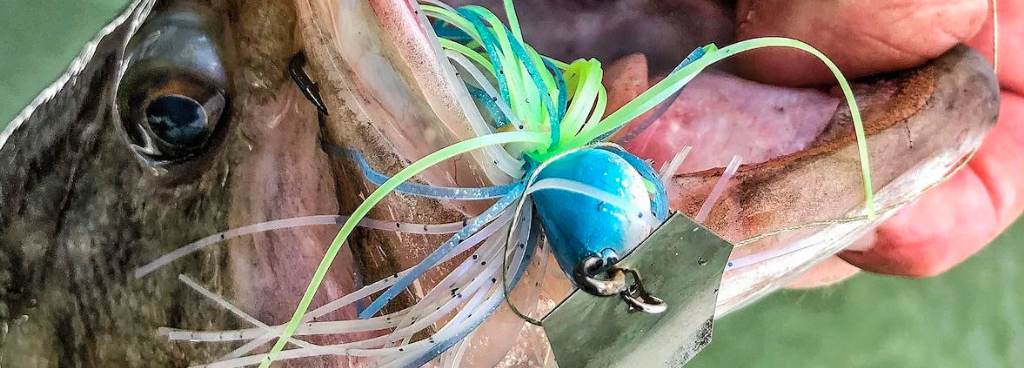Stories Worth Reeling In...
Last Updated on October 18, 2023
When it comes to bass fishing, staying ahead of the curve and trying out new techniques can make all the difference between a good day and a legendary one. In recent years, a game-changer has emerged in the world of bass angling – the chatterbait.
The chatterbait is more than just a passing trend; it has earned its place as a go-to choice for anglers looking to land some serious bass.
So, get ready to take your bass fishing to the next level with the power of the chatterbait. Your next fishing tale might just be about that trophy bass you hooked using this incredible lure.
Table of Contents
Fishing with chatterbaits requires a well-thought-out setup to maximize your chances of landing that elusive bass. Let’s explore the essential tackle and gear needed for a successful chatterbait expedition.
The Right Rod: A medium to medium-heavy baitcasting rod is an excellent pick. Aim for a rod with a fast or extra-fast action to achieve precise control over your bait’s movement.
Matching the Reel: Opt for a reel with a high gear ratio – something in the range of 7.1:1 or higher is ideal. This high gear ratio will enable you to retrieve your chatterbait at a pace that maintains its enticing wobble and vibration.
Line Matters: A fluorocarbon line in the 12 to 17-pound test range should work well for most chatterbait applications. This strength ensures you can handle big bass while maintaining the necessary control.
Choosing Your Chatterbait: For shallow water or when you want your bait to stay closer to the surface, opt for a lighter, 1/4 to 3/8-ounce chatterbait. In deeper waters or when bass are holding deeper, consider a heavier 1/2 to 3/4-ounce option.
The Trailer Effect: Adding a soft plastic trailer to your chatterbait can increase its appeal. Trailers mimic baitfish and add to the vibrations, making your presentation even more irresistible.
Let’s delve into the world of chatterbait choices, covering blade types, colors, and when to use them to reel in that elusive bass.

Blade Types: There are two primary blade types: the traditional Colorado blade and the newer Willow leaf blade.
Blade Colors: Gold and silver are the most common options. Gold blades tend to create more flash and are a great choice in stained or muddy water, as the added flash can help the bass locate your bait. In clearer waters, silver blades can mimic the natural flash of baitfish more effectively.
Bass can be fickle creatures, so having a variety of methods in your angling toolkit can make all the difference. Here are some effective techniques to consider:
1. Steady Retrieves: Steady retrieval is a simple yet highly effective technique. Cast your chatterbait and reel it in steadily at a consistent speed. This technique works well when bass are actively feeding or when you want to cover a lot of water quickly.
2. Stop-and-Go: Sometimes, bass prefer a little more action in their prey. The stop-and-go technique involves reeling in your chatterbait with occasional pauses. As you retrieve, give the bait short, intermittent stops to mimic the erratic movements of an injured or distressed baitfish.
3. The Yo-Yo Method: The yo-yo method is excellent for fishing near the bottom or through submerged cover. Cast your chatterbait and allow it to sink to your desired depth. Then, use your rod tip to lift the bait, simulating a baitfish rising through the water column.

Let’s take a closer look at how chatterbaits compare to other popular bass lures, such as jigs, crankbaits, and soft plastics, and in what situations they excel.
1. Chatterbaits vs. Jigs:
2. Chatterbaits vs. Crankbaits:
3. Chatterbaits vs. Soft Plastics:
Absolutely. Chatterbaits have a reputation for landing big bass. The unique vibrations they produce can entice larger, more experienced fish, making them a favorite choice among anglers pursuing trophy-sized bass.
While chatterbaits are renowned for their effectiveness in murky or stained waters, they can also work in clear water, especially if you adjust your retrieval speed and presentation style. In clear water, bass can see better, so a faster, more erratic retrieve can mimic a fleeing baitfish and attract strikes.
Bass fishing is not just a hobby; it’s a passion. The excitement of the chase, the adrenaline of the strike, and the satisfaction of a successful catch are all part of what makes this sport so thrilling. So, don’t wait. Gather your gear, select your favorite chatterbait and head to the water. That next big bass is waiting for you.